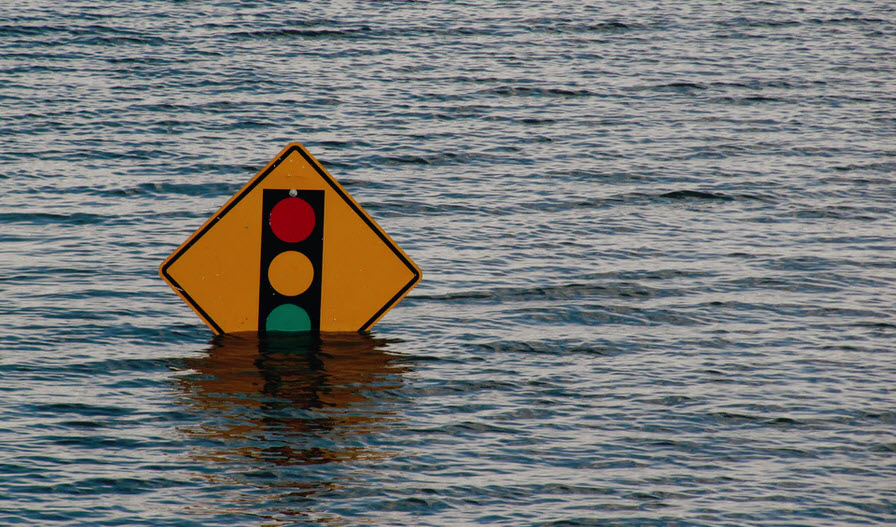Around 41 million Americans live in flood zones, according to a survey by Environmental Research Letters. If you’re one of those people, you’ve likely encountered water damage in one way or another.
Basements flooding, structural damage, and mold are all common after-effects of flood and water damage, made far more likely when living in a moist, flood-prone area. These factors don’t mean you have to pack up and move. With the right preparation and knowledge, dealing with flood damage doesn’t have to be scary.
Here are some actions you can take before and after a flood or water damage to keep your home safe and dry.
1. Insurance
Insurance is tricky when it comes to water damage and floodwaters. Flood damage is classified differently than water damage, so your insurance company might not cover the damage caused by a natural disaster. If your water damage is caused by something in your home, like a washing machine or a burst line, then you may be covered by your policy. The best way to find out is simply to call and ask. However, if you live in a flood zone, you will likely have to purchase a separate flood policy to protect your home.
If you want to check if you’re eligible for flood insurance, check the National Flood Insurance Program’s website for your local community. If you are not on that list, you can still purchase flood insurance: FEMA has stated that all 50 states have experienced flooding, so even if you don’t live in an extremely high-risk area, a policy might be a good idea. Many large insurance companies offer flood policies, so visit your insurance provider and ask if they can protect your home in the case of a flood. It may be another expense, but it will be worth it in the long run.
2. Preparation
If you live in a flood zone, you need to have a plan in place. This plan should include an emergency kit with supplies like canned food, flashlights, and bottled water, in addition to a safe gathering place that is elevated. If you have enough foresight into the flood, consider blocking entrances with water-proof compounds or barriers to keep water from coming into the house. Another way to protect your home is to install check valves, which prevent floodwater from backing up your sewage. Make sure you have these supplies on hand before a flood.
During the flood or water damage occurrence (like a pipe bursting or a washing machine overflowing), move to higher ground and stay out of the area. If you have time, take valuables to a higher elevation, such as the top floor or on top of your counters. If need be, you can also disconnect electricity at the source. Unplug any and all electrical appliances, but avoid touching a source while you are standing in water. Listen to authorities on the radio in the case of an emergency for further instruction.
3. Flood and Water Aftermath
After the main danger has passed and your local authority has deemed your house safe, you still need to exercise caution. Moving any of the water in your home or straying too close to damaged areas can cause injury or worsen the water damage. You can find out more about determining if your house is safe to enter by reading “Repairing Your Flooded Home” by FEMA, which will guide you in turning off electricity, staying safe, and rescuing your items.
The insurance that you purchased previously will hopefully come in handy after the water damage occurred. Make a call to your local agent to discuss what kind of claim you need to file, and how much compensation you can expect for the damage.
After you have assessed the damage to your house and claimed insurance, you can begin making a plan to clean and repair your home. At this point, you should decide whether you’re going to repair the house yourself or use a repair service. Refer to the FEMA “Repairing Your Flooded Home” for a DIY procedure, but if you feel unsafe or uncomfortable in your damaged home, consider hiring a professional.
4. Repair Services
Your home is important, so choosing the right damage repair service will ensure that your house returns to its former glory. Avoid jumping into contracts right after the flood occurs, and make sure that you have plenty of time to view each service and weigh the pros and cons. Find a company that will work with your insurance: some companies will not accept select insurance policies, and you definitely don’t want to pay for the damage out of pocket. Ask during your initial meeting or consultation about insurance.
In addition to insurance, the company needs to have the right services for your situation: if you have contaminated objects in your house from sewage, water damage, and mold, you should search for a company that offers all three. In many cases, companies will work with you and offer a bundle if you work exclusively with them, making the house repair process less expensive.
If you live in Houston, for example, you likely experience your fair share of flooding and water damage. There is no shortage of Houston water damage restoration companies around you, but take time in looking for one with the reviews, services, and insurance policies that match your needs. Avoid companies that offer ridiculously low prices, as they may be taking advantage of a recent flood to scam. In addition, companies who have no reviews and accept no insurance are also likely untrustworthy. Paying for subpar services will only land you in a worse position than before, so choose your company carefully.
Having a plan for a flood and water damage, before, during, and after, will protect you and your home. Living in a flood zone doesn’t have to spell disaster if you have insurance, an emergency kit, plus the knowledge and resources to deal with water damage.

